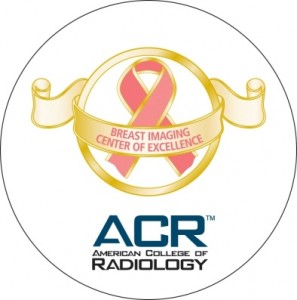Virginia General Assembly Now Requires Breast Density in Patient Letters
 The General Assembly of Virginia has passed legislation that now requires comment on breast density in post-mammogram letters to appropriate patients. For women with dense breasts, the following language will be included:
The General Assembly of Virginia has passed legislation that now requires comment on breast density in post-mammogram letters to appropriate patients. For women with dense breasts, the following language will be included:“Your mammogram demonstrates that you may have dense breasts which can hide cancer or other abnormalities. A report of your mammography results, which contains information about your breast density has been sent to your referring physician’s office and you should contact your physician if you have any questions or concerns about this report.”
We support patient education and encourage our patients to take charge of their own care; however, the inclusion of this breast density information may lead to undue patient anxiety regarding their cancer risk and to possible additional testing, which may impose a cost burden on patients. While the American Cancer Society notes that high breast density is a strong independent risk factor in the development of breast cancer, high breast density, by itself, is not recognized by all payers as a risk factor and additional testing may not be covered by insurance.
What does this mean to you as their primary physician, and how can we help?
- Anticipate increased inquires from your patients with possible confusion and concern regarding their increased risk due to breast density. (Breast density is the ratio of glandular and ductal tissue to fatty tissue in the breast, which on mammography translates to ratio of white to gray. Also note that the mammographic density does not necessarily correlate with palpable tissue firmness.) The American Cancer Society classifies women with “extremely dense breasts or unevenly dense breasts when viewed by mammograms” as those at “moderately increased risk.”
- Understand a patient’s risk for developing breast cancer is multi-factorial; and besides increased breast density, is also associated with other risk factors including:
- Age (the strongest risk factor);
- Personal history of breast cancer;
- Family history (first degree relative younger than 50 at initial diagnosis and/or close male blood relative)
- Genetic alteration (BRCA 1 & 2);
- Biopsy diagnosis of atypia or LCIS;
- Reproductive and menstrual history;
- Long term use of HRT;
- Radiation therapy to chest; and
- Alcohol, body weight and physical activity should be considered
- Anticipate discussions on the importance of early detection of breast cancer and the research around breast density and breast cancer risk.
An excellent resource to share with your patients is the Mammogram Fact Sheet put out by the National Cancer Institute (NCI), which can be found at the following website:
What should you be advising as follow up care and is adding breast ultrasound and MRI appropriate?
- The American Cancer Society supports the adjunctive use of focused breast ultrasound and MRI for patients with higher than average breast cancer risk, but women should also understand the pros and cons of adding breast ultrasound or MRI as a screening tool, including but not limited to, false positive results, false negative results, and cost. Also, ultrasound is only to be used for focal abnormalities and is not suited or performed as a general whole breast screen for high density breasts.
- The American Cancer Society also touts results from a large clinical trial comparing digital versus film mammography. The study reported that digital mammography performed significantly better than conventional film for pre- and peri-menopausal women younger than age 50 with dense breasts. All imaging at our center is digital.
As always, our team of breast cancer experts will provide your patients with compassionate care and education on appropriate screening and breast risk. Should you have any questions regarding the new requirements related to breast density, please do not hesitate to contact us at 703.558.6863.
